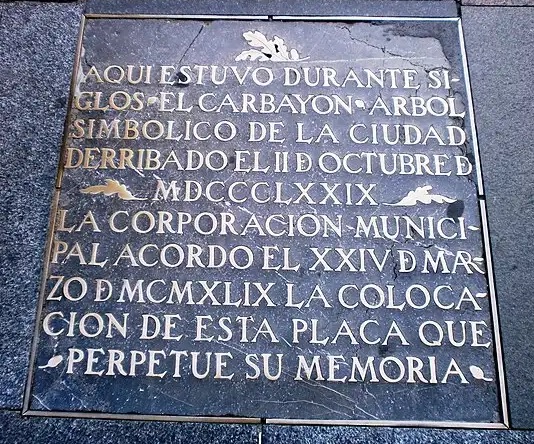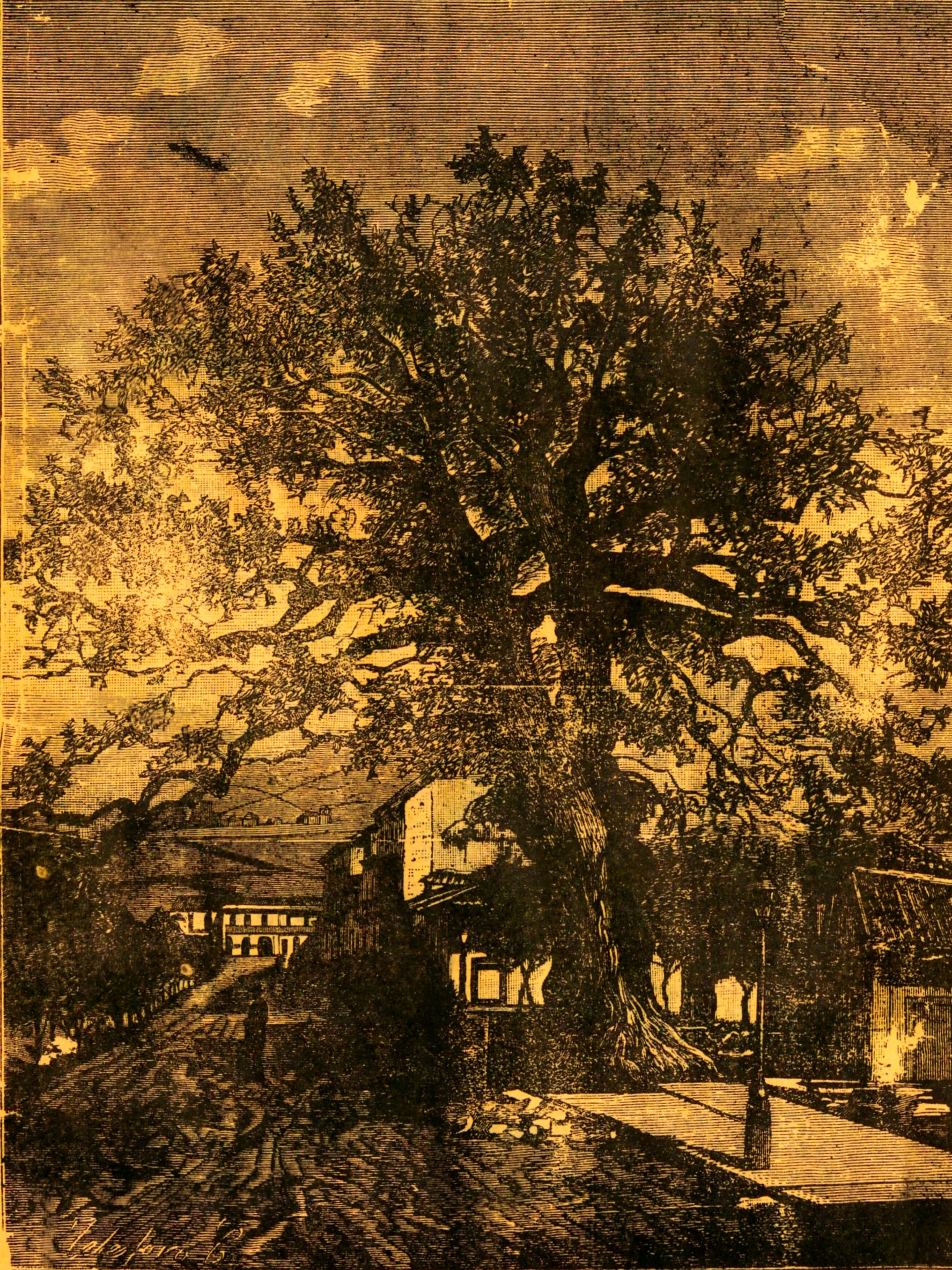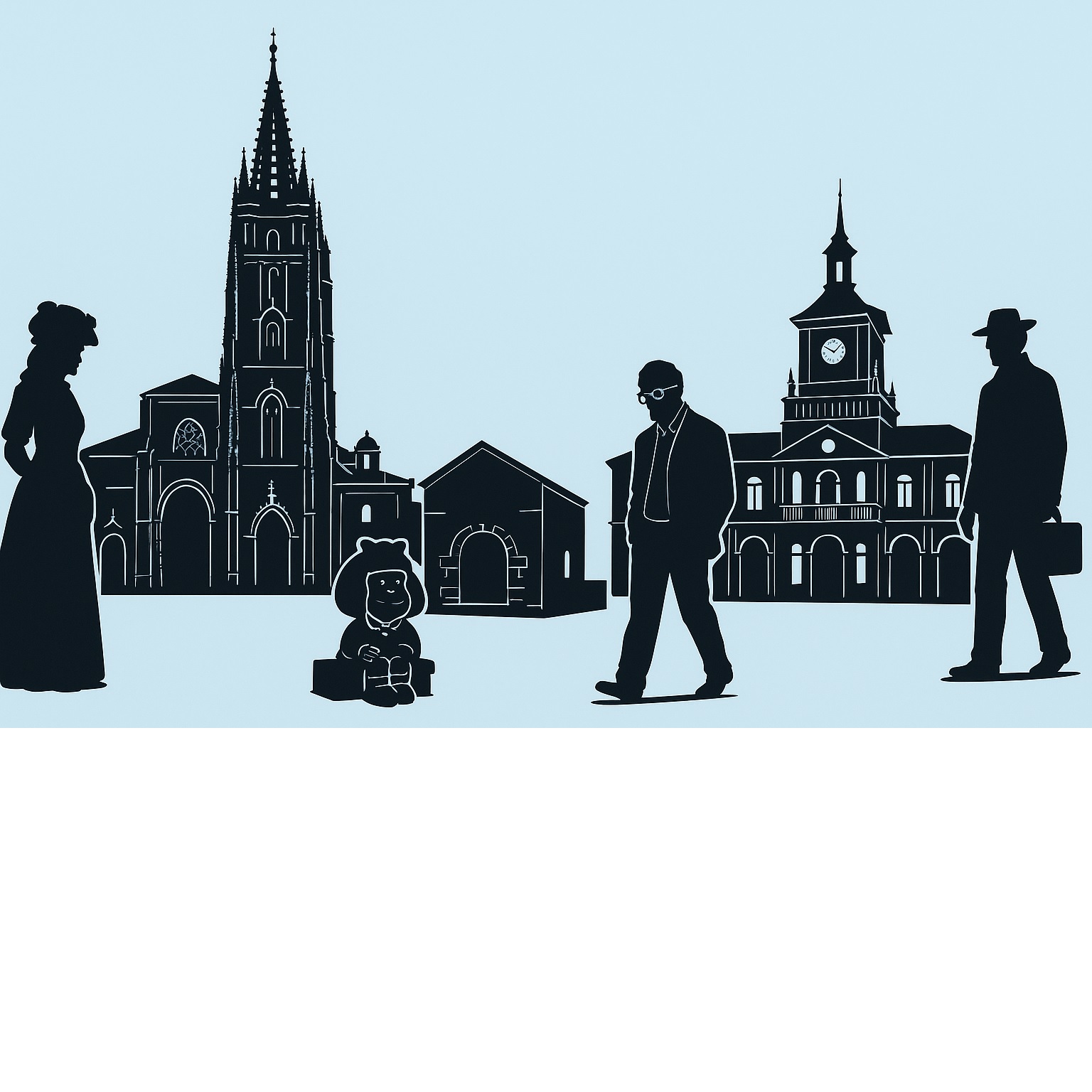Origin of the demonym "carbayones"
Any inhabitant of Oviedo is officially called an "ovetense", but there's a deeply rooted popular name in local identity: carbayones. This curious nickname has its roots in the city's arboreal history and dates back several centuries.

Plaque marking the location of the legendary Carbayón tree
The term comes from El Carbayón, a majestic oak tree ("carbayu" in Asturian) that stood where today is Uría street, the city's main commercial artery. This tree, which lived approximately 500 years, was one of Oviedo's most representative symbols until its felling in 1879.
What does "carbayón" mean?
In Asturian, "carbayu" means oak, and the suffix "-ón" is an augmentative. Therefore, "carbayón" literally translates to "big oak" or "great oak", a very appropriate name for the imposing tree that gave rise to the demonym.
History of El Carbayón
El Carbayón was no ordinary tree. According to measurements taken before its felling, this centuries-old oak measured 9 meters in circumference at its base, had two main trunks reaching 30 meters in height, and its crown extended its branches in a diameter of 38 meters.

Historical representation of El Carbayón in its original location
It was located at the lower end of Campo de San Francisco, opposite the current Campoamor Theater. With the urban expansion of the 19th century and the construction of the new Uría street to connect the center with the train station (inaugurated in 1874), the tree ended up in an awkward position for traffic.
"Here stood for centuries El Carbayón, symbolic tree of the city, felled on October II MDCCCLXXIX. The municipal corporation agreed on March XXIV MCMXLIX to place this plaque to perpetuate its memory."
The debate about its felling divided Oviedo's society. Finally, on September 15, 1879, the City Council voted for its removal (14 votes in favor and 9 against), citing the poor condition of its wood (affected by woodworm) and urban development needs. On October 2 of that same year, the emblematic tree was felled.
The legacy of El Carbayón
- In 1949 a commemorative plaque was placed at its original location
- In 1950 a new oak (El Carbayín) was planted near the Campoamor Theater
- A fragment of the original trunk is preserved in Oviedo's City Hall
- The newspaper "El Carbayón" took its name in homage to the tree



